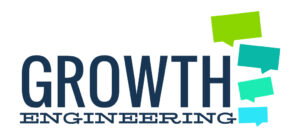Click here to read part 1, 'A Time of Crisis for the UK Learning and Development Industry.'
You’ll remember from your time at school that students were encouraged to be ‘average’. If they performed poorly at a subject or lacked a certain skill, it is that which they would be required to spend the extra time working on. And any natural strengths they had? Well, if they were already good at them, there was no need to expend any further effort in those areas.
This training technique results in a lot of average people: they are mostly good or adequate at most things. But in an organisation, you don’t want a lot of average people – you want employees who have exceptional individual talents. Someone who is brilliant with numbers to work on the accounts; someone with a natural skill for leadership to take the team forward. What does it matter if these individuals can’t do the other’s job? That’s not what you’re paying them for!
What is really needed is a Learning and Development plan which focuses on individual talents: the skills that organisations need. Of course, there will be basic levels of understanding that are necessary in an organisation. But over and above this, businesses should be focusing on developing employees’ natural talents.
How to bring talent and learning management together
 1. Create competencies.
1. Create competencies.
In order to know what the L&D plan needs to deliver, organisations need to create a set of competencies – the skills and behaviours that employees need to possess and display in order to meet the company’s needs and the industry’s demands.
2. Assess competencies.
Once competencies have been created, employees can then be assessed. Competency assessments are all about providing a way of building the skills and knowledge that people need to perform their current job. It’s also the key element of the succession planning process because it provides a way of developing people for their future roles.
3. Map skills to roles.
What makes a good salesperson? What skills does a retail store manager need? How do they differ from a warehouse manager, or Head of Finance? Once you know what skills each role requires, you can plan your training around learning and improving these skills – which will benefit the individual employee, the department and the company.
4. Develop an L&D strategy aligned to business needs.
In the past, this might have involved creating a five-year L&D plan that would focus on meeting the business’s projected needs. But with such a tumultuous business landscape now, it is essential instead for L&D to develop the ‘mindset and capability to understand the emerging needs of the business … and [have] the ability to design “just-in-time” learning solutions that harness current issues’ (Training Industry, 2011). L&D need to be able to react to changes in the business quickly, efficiently and expertly.
5. Get Subject Matter Experts involved in eLearning content production.
Stop outsourcing your training and development to external companies that don’t know your organisation, don’t know your employees and don’t know your industry.
To create the best training programme that truly meets the needs of the organisation, L&D should utilise the skills and knowledge of subject matter experts (SMEs) within the company.
While subject matter experts really know their stuff – that’s why they’re experts after all – this doesn’t necessarily mean they know how to teach others what they know, especially when it comes to designing online learning. To get SMEs on the same page as L&D, it’s important to get them involved in eLearning production (Articulate, 2011). Think of your own organisation: I’ll bet there are a lot of extremely knowledgeable employees who are approaching retirement age. Are you just going to let them take their knowledge with them and have it disappear from the company forever? Of course not! Get them involved – encourage them to collaborate with other employees, old and new, and share their knowledge.
6. Make training relevant to the role.
To truly break down barriers between learning management and talent management, it’s essential that training is relevant to the employee’s job role. Contextual learning (making the learning directly relevant) aids in problem solving, encourages learners to learn from each other and allows them to monitor their own learning, leading them to become motivated self-learners, or ‘active’ learners (CORD, 2012). In other words, training has to be business critical: it has to be beneficial to the organisation and fit into the business’s objectives.
7. Make employees accountable.
When employees become active learners, they become accountable – they realise that improving their skills and learning new things is beneficial and ultimately up to them. Whereas in the past L&D ‘owned’ the training program, more and more these days it is the employees (i.e. learners) that are taking the reins (Personnel Today, 2014). In an ideal world, L&D will become the facilitators of knowledge, helping learning to happen where it needs to happen. Which brings us on to point 8…
 8. Encourage informal learning.
8. Encourage informal learning.
You may be familiar with the ‘70:20:10’ problem. It states that while 70% of our knowledge comes from on-the-job training and 20% through observation of others (together, these are ‘informal’ or ‘social’ learning), only a tiny 10% comes from ‘formal’ training, i.e. training courses, workshops, eLearning units and textbooks.
For some reason, it is the 10% that L&D programmes focus on – which means employees miss out on 90% of learning which occurs informally! Therefore, when employees are encouraged to continue their education outside of the formal training, they actually come to remember more.
9. Reinforce learning.
Organisations need to have a way to reinforce the learning content – otherwise, it will be forgotten. After all, without reinforcement, the training will be nothing more than knowledge transfer, which has been shown not to lead to any behavioural change (CAOT, 2005).
Different forms of training
Essentially, although L&D may be confident that they can improve employees’ performance, if the training isn’t obviously linked to their roles, skills and strengths, the organisation won’t see any discernible improvements and, sooner or later, the L&D plan will fail.
To bridge the skills gap, we need to utilise the different forms of training available to us. If 90% of learning comes from informal training yet L&D are focused only on the formal 10%, they are investing 100% of their resources (not just money, but time, accountability, effort and support, too) in 10% of learning. Of course the sums aren’t adding up!
Imagine what could be achieved if L&D focused 100% of their resources on reaching 100% of learning… Learning would feel personal and learners would become empowered – they’d be able to see improvements in their own skills, witness the positive impact that training is having on their daily lives and really internalise the idea that the training is useful to them.
When learning is informal or ‘social’ we retain more of what we’re taught. Indeed, now more than ever there is an emphasis on communication in L&D (Personnel Today, 2014). Communication between learners aids learning; communication of the culture of learning encourages the whole organisation to take charge of their learning and to believe in it.

Next time: why education and entertainment should not be thought of as mutually exclusive!


